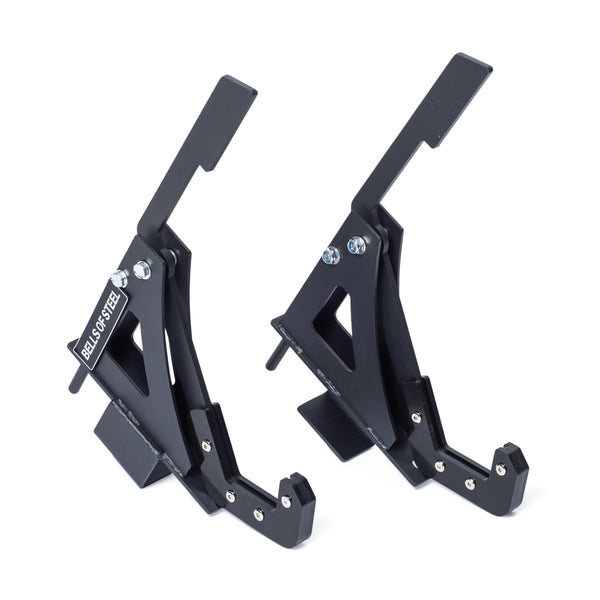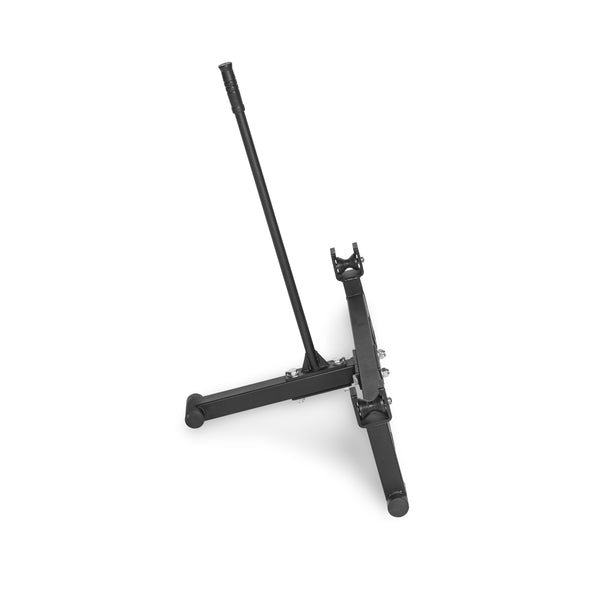Training solo in a home gym has its perks: no waiting for machines, no gym bros curling in the squat rack, and you get to blast your favorite hype playlist without judgment. But it also means you’re 100% responsible for your safety, progress, and setup.
The good news? With the right gear, lifting alone can be just as safe (and sometimes safer) than lifting in a commercial gym. Here's a guide to the best gear for solo strength training, so you can train hard and smart—no spotter required.
Why Training Alone Requires Specialized Gear
The challenges of lifting solo
When you’re training alone, a few things become non-negotiable:
-
Safety first: There’s no one to bail you out if you fail a rep.
-
Efficiency matters: No extra hands to adjust your setup.
- Precision is key: You need reliable gear to maintain proper form and confidence under load.
These aren’t limitations—they’re just reminders that your gear needs to work with you, not against you.
Must-Have Equipment for Solo Lifters
Let’s break down the top pieces of equipment that turn your home gym into a one-person lifting fortress.
1. Spotter Arms or Safety Straps
Why they matter:
Spotter arms or safety straps are your first line of defense against failed reps. Whether you're benching, squatting, or going full beast mode, these keep the bar from turning your PR attempt into a trip to the ER.
Bells of Steel Pick:
-
Spotter Arms for Hydra & Manticore Racks – Built tough with a UHMW lining to protect your bar and uprights. Easy to adjust, and they catch the bar when you can't.
-
Safety Straps – Great for those who want more flexibility with bar positioning or who train in racks with strap compatibility.
Ideal for:
Bench press, overhead press, front squats, heavy rows—any lift that could go south fast.
2. Monolift Rack Attachment
Why it matters:
Walking a bar out from the rack can throw off your setup and eat into your energy—especially for squats and bench. A monolift attachment swings out of the way when you lift the bar, so you can stay locked in from the get-go.
Bells of Steel Pick:
-
Monolift Rack Attachment – Features cantilever swing arms, UHMW protection, and smooth barbell rollers for easy adjustment.
Ideal for:
Solo squatters and benchers who want less setup and more go-time. Especially useful for powerlifters training heavy without a handler.
3. Deadlift Jack or Barbell Jack
Why it matters:
Changing plates when the bar is on the floor is a back-taxing nightmare. A deadlift jack saves time (and your spine), especially if you're cycling heavy sets solo.
Bells of Steel Pick:
-
Meat Hook Jack – Small but mighty. Slides under your bar to lift one side effortlessly.
-
Deadlift Jack with Rollers – Great for serious lifters who change plates often and want both sides elevated.
Ideal for:
Deadlifts, block pulls, or deficit pulls—anywhere bar loading and unloading happens on the ground.
4. Lift-Off Bench or Wide Pad Bench
Why it matters:
Solo benching can be sketchy. A stable, supportive bench with a wide pad reduces shoulder stress and helps you press with more confidence.
Bells of Steel Pick:
- Hero Bench – Wide and grippy for better stability. Pair it with spotter arms or a monolift attachment for a safer bench press setup.
Ideal for:
Flat bench press, dumbbell presses, seated accessory work.
5. Silencer Pads or Deadlift Pads
Why they matter:
Noise and vibration are real concerns in home gyms. Silencer Pads (AKA Deadlift Pads or Crash Pads) protect your floor, dampen sound, and absorb the shock of dropping heavy weights—all while saving your barbell.
Bells of Steel Pick:
- Deadlift Pads – Dense foam with a low-profile design. Keeps the peace with your downstairs neighbors and protects your gear.
Ideal for:
Deadlifts, snatches, cleans, or any time weight hits the ground fast and hard.
6. Weight Plate Holders and Storage 
Why it matters:
When training alone, organization saves time and reduces the risk of tripping over wayward plates or dumbbells.
Bells of Steel Pick:
-
Wall-Mounted Plate Rack – Keeps your plates tidy and easy to access.
-
Rack-Mounted Plate Pegs – For storing plates right where you need them, on the uprights.
Ideal for:
Streamlined training sessions and stress-free transitions between lifts.
7. Adjustable Cable System 
Why it matters:
Solo training often requires versatility. An adjustable cable system gives you dozens of movement options in a small footprint—from curls to rows to face pulls—without needing a training partner.
Bells of Steel Pick:
- Plate-Loaded or Weight Stack Cable Towers – Add to your power rack for instant cable machine action.
-
Kraken Attachment - Mount your cable machines between your power rack uprights for more space.
Ideal for:
Isolation movements, warm-ups, finishers, and variety without needing more machines.
Final Thoughts
Training alone doesn’t mean training unsafe. With the right equipment, you can hit big numbers, stay injury-free, and enjoy the quiet satisfaction of solo domination. From spotter arms to monolift attachments, each piece of gear is a vote for independence, confidence, and clean reps—no spotter needed.






